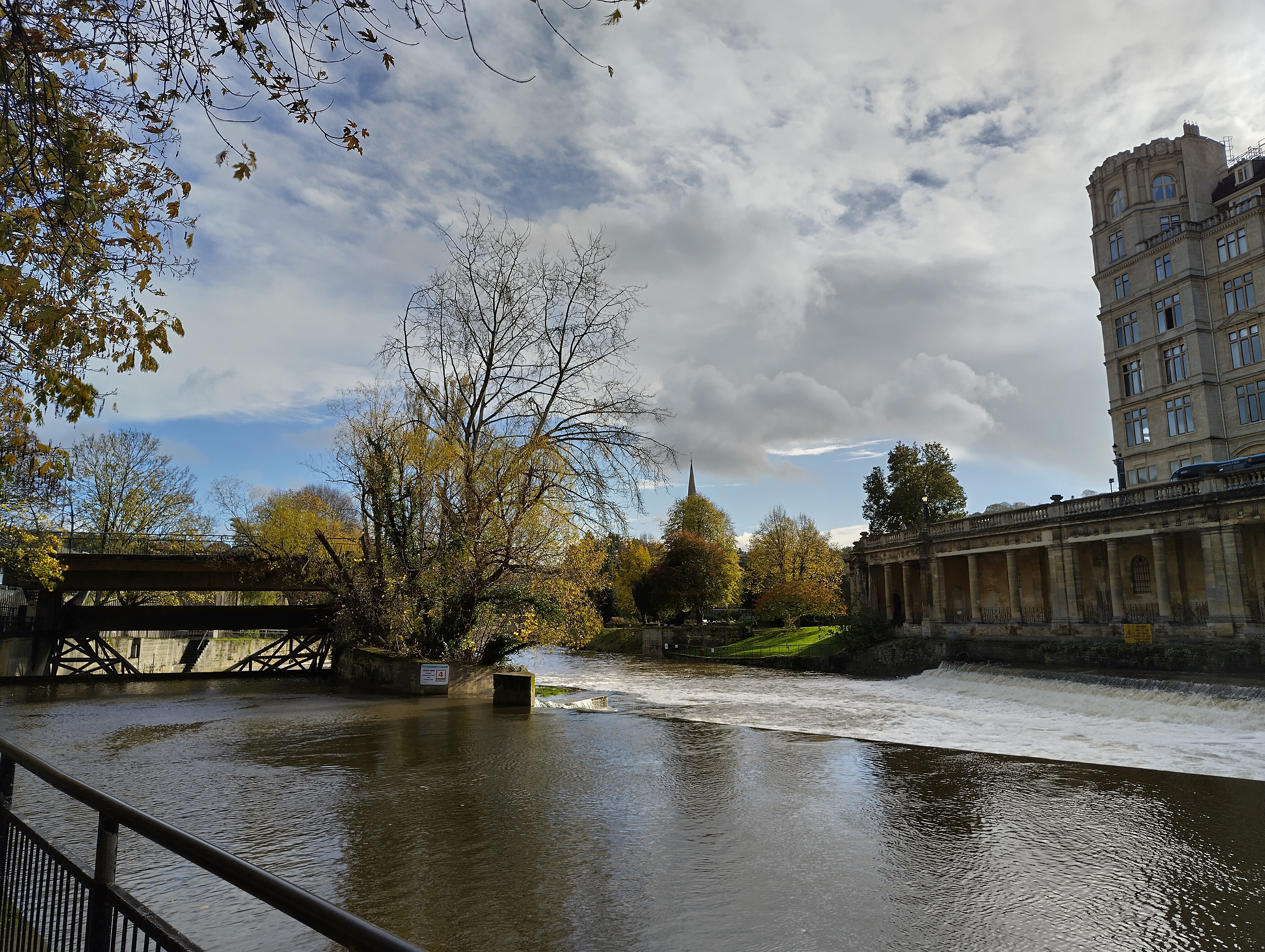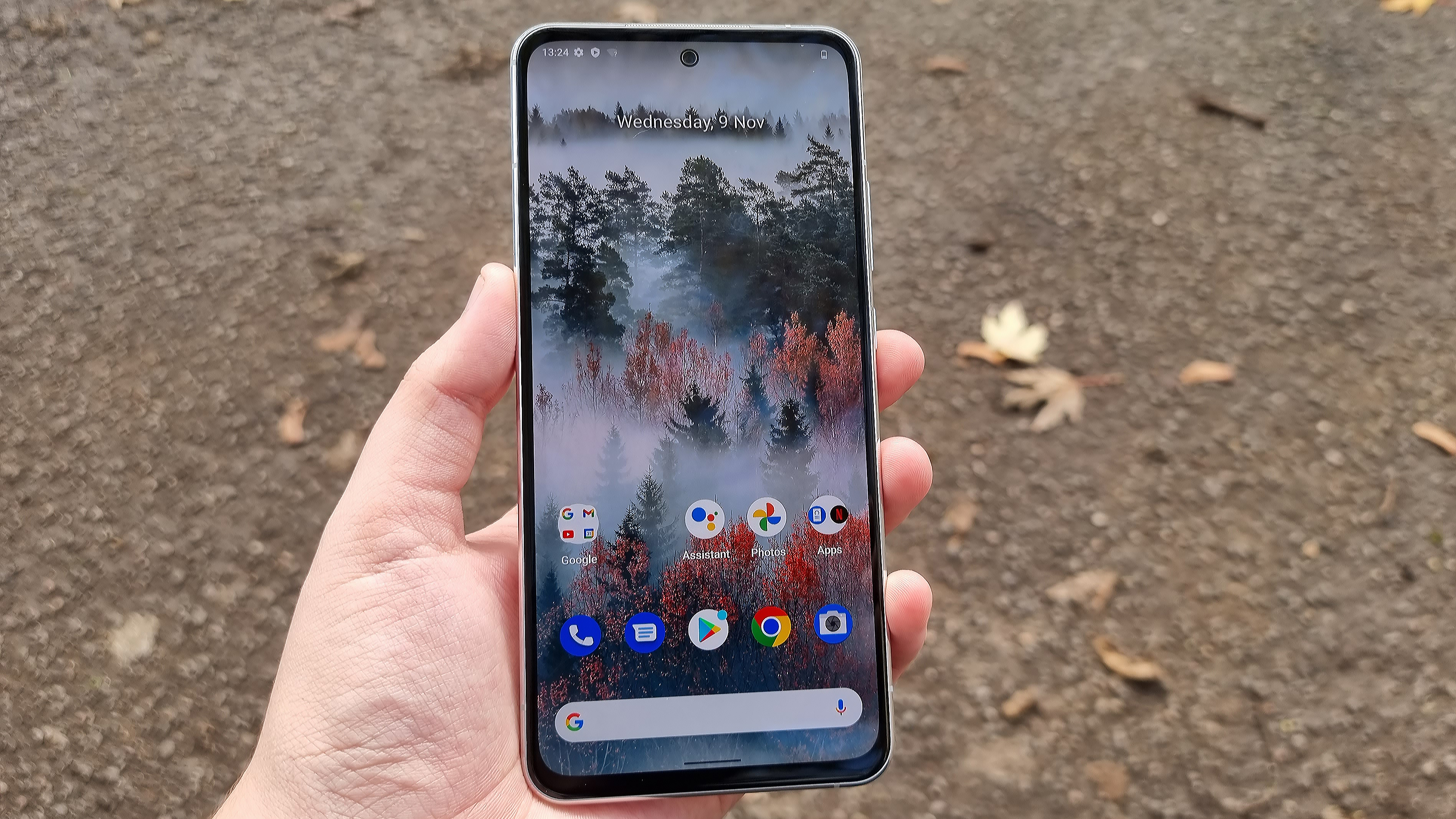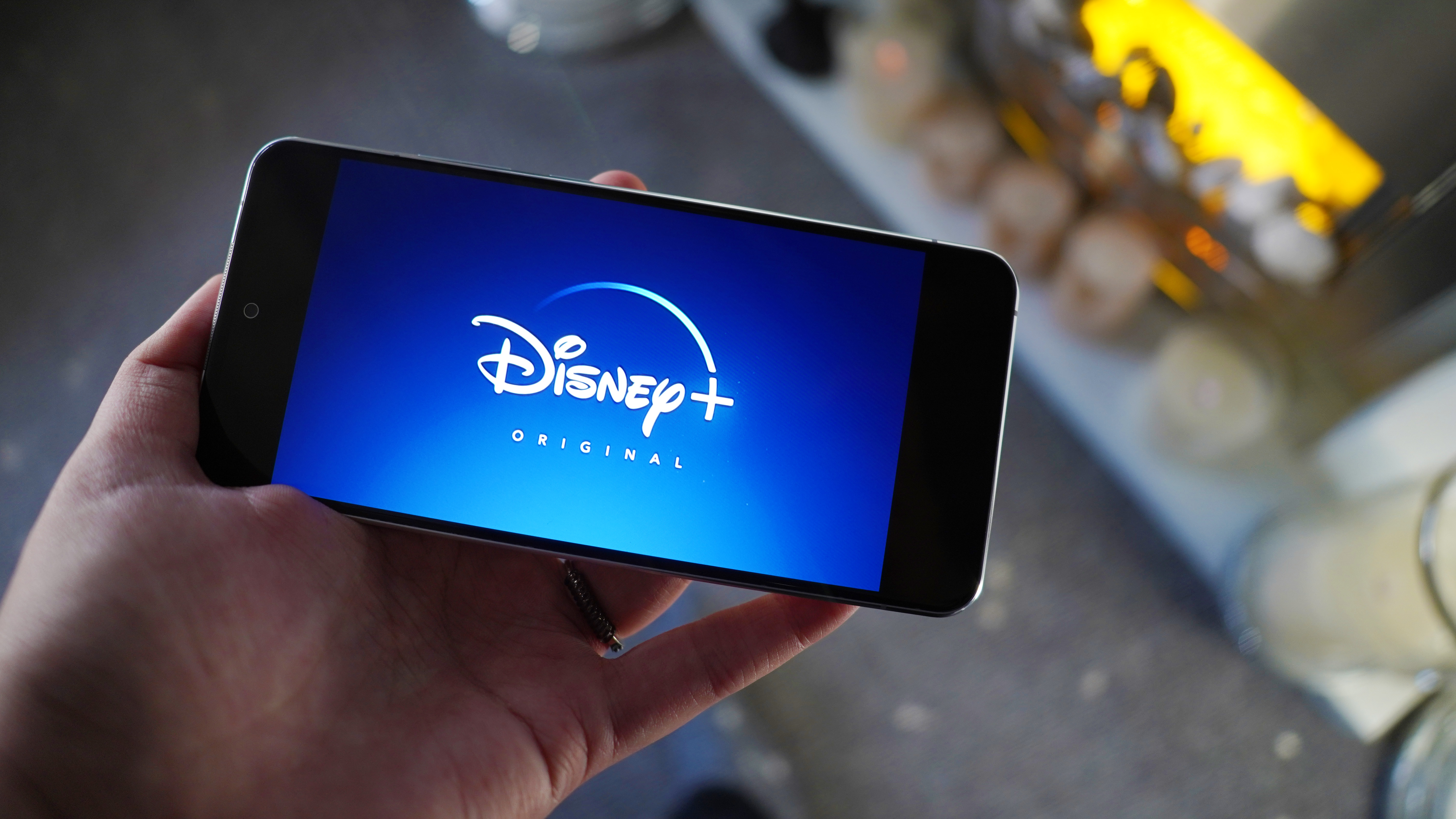Digital Camera World Verdict
The Nokia X30 5G has been described as one of the most sustainable and eco-friendly smartphones around. Why should this matter? Because this smartphone is capable of just as much, if not more than some of the best flagship releases in recent years, and has not compromised on quality at all. If Nokia can continue to make dependable smartphones almost entirely from recycled materials, there's no excuse for other manufacturers not to follow suit, pushing the limits of smartphone life expectancy. In short: it's a reliable phone that can keep up, but there's nothing too special about this mid-range device.
Pros
- +
PureView photos with 50MP OIS Camera
- +
100% recycled aluminum frame
- +
High-quality ultrawide-angle images
Cons
- -
Could be more sturdy and durable
- -
Camera quality doesn't match Samsung or iPhone
- -
Doesn't include power adapter (USB type-C)
Why you can trust Digital Camera World
The Nokia X30 5G smartphone was released in September 2022 and is a great choice for those wanting an Android 12 compatible device that can handle all of the latest apps and games. It's got a great camera system too, but without the higher price tags that can be found with similar devices such as the Google Pixel 7 and the Oppo Find X5 series.
Priced at a competitive $540 / £399.99 / AU$899, this smartphone from Nokia is a great all-rounder and a bargain price for what the device can do. The camera system includes a main 50-megapixel f/1.8 lens that performs superbly in both daylight and darker scenes, and the video quality produced is pretty good, with spatial audio.
As a premium mid-range device, this Nokia X30 5G smartphone may not be able to compete with the likes of the latest (and most expensive!) camera phones, but in comparison with the Nokia G60 5G, which was released just weeks before, the X30 boasts a better display, camera, and battery life.
Chosen by us as one of the best Nokia phones (number 2 on the list), there's not much that this Nokia X30 5G can't do. Although it has an above-average but not superior camera unit, the operating system on this device is running the latest Android 12, so there are plenty of compatible apps and software you can download, with no task that you can't throw at it.
Great for multitasking, and with the options of a 128GB or a 256GB capacity device, you should be able to store a multitude of photos, videos, and apps on this smartphone without any trouble, supported by a powerful Snapdragon 695 5G chipset and a minimum of 6GB Ram to optimize your browsing and workflow.
Nokia X30 5G: Specifications
Rear cameras: 50 MP f/1.8 (wide), 13 MP f/2.4 (ultrawide)
Front camera: 16 MP, f/2.4 (wide)
Display: 6.43” FHD+ AMOLED PureDisplay, 20:9, FHD+ 1080 x 2400
Operating System: Android 12
Chip: Qualcomm SM6375, Snapdragon 695 5G
Image stabilization: OIS
Max video resolution: 1080p@30/60fps
Touch ID: Yes
Face ID: Yes
5G: Yes
Capacity: 128GB / 256GB
RAM: 6GB / 8GB
Dimensions: 158.9 x 73.9 x 8 mm
Weight: 185g
Water resistance: IP67 (up to 1m for 30 mins)
Charger: USB Type-C 2.0
3.5mm Headphone port: No
Nokia X30 5G: Key features
The Nokia X30 5G has many cool features, but the main selling point without a doubt appears to be the environmentally friendly factor of the phone, and how its build and manufacture comprise almost entirely recyclable materials to reduce waste in production and promote sustainable technology.
The best camera deals, reviews, product advice, and unmissable photography news, direct to your inbox!
Even the packaging that contains this smartphone is made of 75% recycled materials, and the brown box is Fiberglass Structural Engineering (FSE) certified to ensure its industry-safe engineering methods.
The Nokia X30 5G relies on the pretty high 90hz refresh rate of its 6.43” full HD AMOLEDCorning Gorilla Glass Victus flat screen display, to optimize the browsing experience for users, displaying visuals in high quality while maintaining adequate speeds to keep up with streaming habits.
Nokia also has a newly introduced 3-3-3 promise and benefit for customers, that covers the X30 5G handset, and pledges that the company will cover 3 years of security patches, monthly security updates, and OS updates, plus include a 3-year manufacturer warranty with its devices.
This ensures that the Nokia X30 5G will be fully covered and functioning securely in all areas up until at least the Android 15 rollout we can expect in a few years' time.
Nokia X30 5G: Features
The Nokia X30 5G has a pretty impressive rear dual-camera unit that comprises a wide 50-megapixel f/1.8 main PureView camera, as well as a 13-megapixel Capture Fusion f/2.4 ultra-wide camera. The latest features on the X30 and its camera systems feature multiple shooting modes that include Tripod mode, Night mode 2.0, AI Dark Vision, and AI Portrait.
Nokia's innovative Capture Fusion software on the 13MP camera supposedly brings the same power of the main 50MP camera to the ultrawide shots that are captured, by simultaneously taking a picture with both cameras, and then fusing the images together to achieve a better center area detail.
Both of these cameras on the X30 are protected by scratch-resistant Corning Gorilla Glass, with DX plus. that has been optimized to allow for 98% of all light to enter through the lens.
There's also what Nokia calls its PureView technology and photography experience, first introduced in the Nokia 808 PureView phone, that involves the use of on-chip image processors that can perform image scaling and oversampling adjustments with reduced noise.
The 50-Megapixel PureView OIS camera features both optical and electronic image stabilization and is designed to allow for more light to enter the camera sensor. You can switch to shooting in Pro mode also, which allows for complete control over settings such as ISO, White Balance, and Shutter Speed.
The X30 also allows for RAW captures that can produce superb low-light images, with nighttime shots benefitting from OIS and the Dark vision AI feature - which is automatically enabled in darker environments to produce natural colors and replace the effects of using flash, while also depicting the details that our eyes can barely see in low-light.
Tripod Mode is another useful feature that is automatically enabled when the device is held super steady, or physically mounted on a tripod, to enhance the results when capturing long exposures and producing the best possible quality of night shots. The AI Portrait mode works in a similar way by enhancing facial details when shooting a subject, as configured by the Nokia X30 5G's clever AI technology.
Recording video on the Nokia X30 offers full HD resolution at either 30 or 60 frames per second, with the maximum being 1080p resolution at 60fps. The video settings feature a Cinema mode with capabilities for time-lapse recording and super slow motion.
The Nokia X30 also boasts highOZO Spatial Audio capture when recording video, with reduced wind noise, and aptX HD, aptX Classic, and aptX Adaptive modes, plus a Dual Sight feature that uses the front and rear cameras to record a scene from two different angles at the same time.
The front selfie camera of the Nokia X30 5G boasts AI portraits and night selfie modes, that can enhance facial details and background focus using Ai technology, as well as customization that you can pre-apply to an image before capture.
The night selfie feature works by processing uncompressed data to create the best possible self-portrait when in low-light situations taking away the need for using flash and resulting in highlighted areas or red-eye in images.
See the Sample Images and video section of this review where we examine how it captures selfies and dark night scenes.
Nokia X30 5G: Build & handling
Available in both Cloudy Blue or Ice White, this phone is super lightweight, at only 7.95mm thin and weighing just 185 grams. The device is big enough to enjoy browsing, with a large flat-edged 6.43” screen, and an AMOLED PureDisplay that is said to be Nokia's best one yet, with bright colors and smooth viewing at an adequate 90hz refresh rate.
The buttons feel pretty smooth to press, with a nice click-feel, and the back casing of the phone is silky and soft to touch, overall pleasant to hold. Though, personally, being used to larger smartphones with larger screens and sufficiently weighted cases on them, holding a phone such as the Nokia X30 that is so lightweight feels a bit unnerving and worrisome that you may not notice if it ever fell out of a pocket.
The Corning Gorilla Glass Victus of the phones screen and back camera unit should be strong and sturdy enough to prevent any smashed screens from occurring by accidental drops from a reasonable height, and the overall build of the phone, while lightweight, feels substantial and well-made, definitely a premium device.
There is unfortunately no headphone jack on the Nokia X30, though users familiar with android devices compatible with USB type-C charging ports will be accustomed to using a 3.5mm adapter where necessary, or opting for Bluetooth headphone connectivity instead. Speaking of USB type-C charging, this device uses a USB type-c to type-C cable (included) that requires a charging adapter of this time (not included).
The battery life on the Nokia X30 is said to have a life of up to 800 recharge cycles, with 33W fast charging support. The phone is also fully IP67 water and dust-resistant, capable of being submerged in water up to one meter deep. This is a pretty rare feature to find on a mid-level smartphone of this price range, not being a rugged phone or one intended for rigorous use.
What makes the Nokia X30 5G so eco-friendly?
The Nokia X30 5G is being heralded as the company's most eco-friendly and smallest eco-footprint-producing device to date, having been made from 100% recycled aluminum, and 65% recycled plastic on the back casing of the phone. The device is also free of any brominated and chlorinated compounds, and antimony trioxide, as can often be found in previous Nokia Technologies.
Built with both sustainability and longevity in mind, the Nokia X30 is intended to be a phone that won't need upgrading or replacing anytime soon, protected by a 3-year warranty and regular security OS upgrades throughout the year to ensure the best possible functionality and a healthy and protected operating system.
This smartphone is designed for everyday life and regular use, with a robust metal frame and a pretty tough and durable display coated with Gorilla Glass. While it's not classed as a rugged phone, Nokia as a brand has always been known to produce pretty indestructible phones, even as far back as the "brick" 3310 model.
Nokia X30 5G: Performance
The overall performance of the Nokia X30 5G smartphone I would say is sustainable and dependable. While it may not excel in areas where the latest and expensive flagship phones do, such as having 100MP Sony sensor cameras, or super-fast processing chips, the X30 can perfectly hold its own and achieve any task you give it at an above-average level without any fault.
The phone comes pre-installed with Google's roster of apps including Google One, Digital Wellbeing, Health Services, Home, Assistant, Drive, and Gmail. Many of these I uninstalled pretty much instantly besides Google Chrome. The X30 also self-installs Netflix, YouTube Music, Spotify, and GoPro Quik: Video editor, which I didn't have the opportunity to test out, not being a GoPro owner.
The aspect of this device that impressed me the most was the battery life, without needing a charge for over four days of light use in-between testing stages, while the device remained on, in sleep mode.
The product description from Nokia states that the X30's battery life can last for two full days, and this is certainly true as far as I can tell, having only used the phone for streaming on Disney Plus and light gaming on apps such as Pokemon Masters EX and Classic Sonic The Hedgehog 2.
This phone would definitely be suitable for gaming on Minecraft, PubG, and other light software, though it is not designed to be a gaming phone, despite the energy-efficient chipset. If you're looking to dive into regular games of Fortnite or stream on Twitch then this might not be the smartphone for you.
As for the camera performance on the Nokia X30 5G, it was pretty good! The images produced were sharp enough and vibrant, with tools to correct and adjust any faults that include shooting RAW and using pre-existing filters and AI modes. While the photos produced are adequate and good enough for sharing on social media, was this the best smartphone camera I've ever used? Not really.
Again, there's nothing necessarily wrong with the images produced by this Nokia PureView camera, but having tested plenty of the latest smartphones and their camera systems at similar price points, this one didn't exactly wow me or live up to the competition, lacking in clarity and clean-looking images when shooting landscapes, replaced with overcompensating HDR filters.
The optical zoom on this camera also wasn't up to scratch or even worth using at all, resulting in pixelated images that were over-detailed and pre-sharpened. I found that this slightly improved when changing the aspect ratio but not significantly. Take a look at the image gallery below and click through to the end for a Panorama example.
Landscape shots with the Nokia X30 5G













It has to be said though, that the Night mode, Capture Fusion, and Dark Vision AI features of the main and wide cameras do work very well in low-light areas, though the images it produces seemed a little too vibrant for my taste, making it look a lot less like a natural night time shot and more like studio lighting had been used out of place at night, washing out the scene a little.
I tested the image quality of the Nokia X30 5G with that of my Samsung Galaxy S21 Ultra 5G smartphone, and as can be seen from the unedited images below, the Nokia falls short in most areas except for the night scenes in my garden. Please note the captions included with each image, to determine which phone captured it.







I was pleasantly surprised by the background-blurring effects of the Portrait AI mode, as well as the front selfie 16MP camera, as my Samsung Galaxy S21 Ultra doesn't always get this right, but the Nokia X30 allowed for perfect adjustment of the scene before capture, and could even alter the bokeh produced into different desired shapes such as a heart or stars instead of circular.
I again compared this selfie camera (16 MP, f/2.4) with my front camera on the Samsung Galaxy S21 Ultra (40 MP, f/2.2), and surprisingly despite the difference in megapixels, the results from these two front cameras are actually pretty similar, and I think the X30 may have even won this round.




As you can see from the gallery above, the blurred background produced by the front camera on the Nokia X30 is much smoother than that on my Samsung S21 Ultra, and it offers plenty more features that can be adjusted to enhance the results even further if I chose to do so.
Nokia X30 5G: Sample video
Speed Warp video test
Nokia X30 5G: Verdict
Overall the Nokia X30 5G delivers superb functionality, great battery life, capable graphics with a chipset and sufficient RAM that can keep up with multitasking, and light gaming usage without any overheating or lag issues.
While it's certainly not the best phone for photography on the market right now, with a mediocre and mid-range set of specifications, there's nothing really wrong
with this device and not much to complain about, it just does everything you need it to at a satisfactory level that you would expect from today's smartphone industry.
If you're not fussed about having an absolutely out-of-this-world camera system, but desire practicality, then this may be the smartphone for you. Other features such as fast 33W charging, sharp display visuals, speedy streaming, and dependable performance all housed in a sleek and compact build make this device perfect for those who value longevity in a smartphone they can keep for years.
You might also like the best 5G phones and the best budget camera phones.

Beth kicked off her journalistic career as a staff writer here at Digital Camera World, but has since moved over to our sister site Creative Bloq, where she covers all things tech, gaming, photography, and 3D printing. With a degree in Music Journalism and a Master's degree in Photography, Beth knows a thing or two about cameras – and you'll most likely find her photographing local gigs under the alias Bethshootsbands. She also dabbles in cosplay photography, bringing comic book fantasies to life, and uses a Canon 5DS and Sony A7III as her go-to setup.











